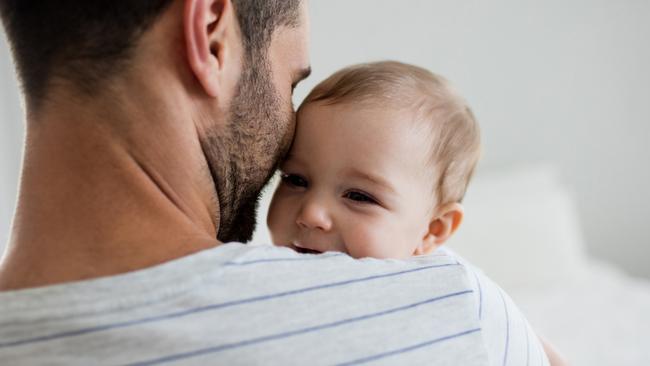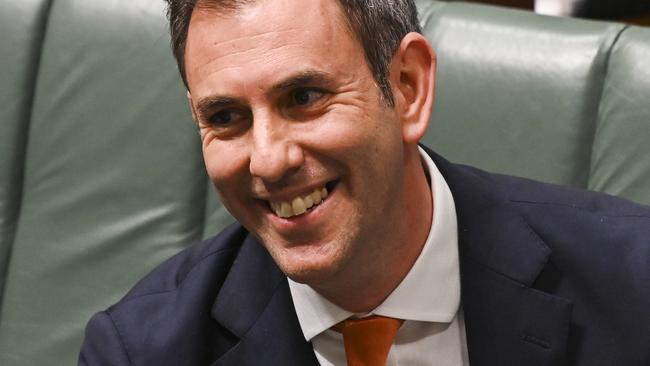Paid parental leave changes in the federal budget will give parents more flexibility
It’s being described as “the biggest expansion to paid parental leave” since the system was introduced – and it gives parents far more flexibility.
Parenting
Don't miss out on the headlines from Parenting. Followed categories will be added to My News.
Changes to the paid parental leave system announced in Tuesday night’s federal budget mean parents will be able to share the load of caring for their newborn children more equitably.
Paid parental leave currently allows the primary caregiver to take 18 weeks off work at the minimum wage. The other parent gets just two weeks.
Under the government’s changes, the total number of weeks available will gradually rise from 20 to 26 (i.e. six months), with two weeks being added in July of 2024, 2025 and 2026.
The cost to the federal budget is $530 million over four years.
In his speech to parliament on Tuesday night, Treasurer Jim Chalmers described it as “the biggest expansion to paid parental leave since its creation” in 2013.
“This goes beyond taking a bit of pressure off household budgets. This is about greater equality and greater security for Australian women – and more dads doing their bit,” Dr Chalmers said.
“It’s about participation and productivity, and that is what makes it economic reform.”

The six months of paid leave can be shared between two parents more freely than before, and the government hopes to incentivise both caregivers to take time off by assigning each of them a dedicated “use it or lose it” portion.
Either parent will be able to claim paid parental leave first, and both will be able to receive the payment at the same time as any employer-funded leave.
The idea here is to give people more flexibility. So, for example, a couple could decide to use 11 weeks each, with one parent taking two days of leave a week and the other taking three.
Another measure designed to increase flexibility: from July of 2023, you will be able to take leave in blocks as small as a single day at a time, with periods of work in between.
If you’re a single parent, fear not – you don’t lose the weeks of leave that would otherwise be assigned to a partner. You will be able to access the full entitlement.
The government is also expanding eligibility for the scheme by introducing a $350,000 family income test, under which families can be assessed if they don’t meet the individual test.

The government believes paid parental leave is “an important mechanism” for supporting gender equality and narrowing the gender pay gap.
“A key driver of the gender pay gap is the disproportionate amount of unpaid care and work performed by women,” the budget documents note.
“It is estimated that women reduce their hours of paid work by around 353 per cent across the first five years following the arrival of children. Men’s hours of paid work drop only during the first month of parenthood before returning to previous levels.
“Many men also want to take additional time off work following the birth or adoption of a child, as indicated by the increasing take-up of parental leave by fathers in the private sector.”
Parents of young children are among the biggest winners in the budget. In addition to the parental leave changes, many of them will also benefit from increased childcare subsidies.
“Cheaper childcare is a game-changing investment in families, our workforce, and our economy,” Dr Chalmers said.
“It will increase the paid hours worked by women with young children by up to 1.4 million hours a week in the first year alone. That’s the equivalent of 37,000 extra full-time workers.
“Because our early childhood educators guide our young ones and help them grow in those critical early years, for the best possible start in life – it’s more than care. It is cost-of-living relief with an economic dividend.”

The government is spending $4.6 billion to increase Child Care Subsidy rates.
From July of next year, rates will rise from 85 per cent to 90 per cent for families earning less than $80,000. Subsidy rates will then taper down one percentage point for each additional $5000 in income, until it reaches zero per cent for families earning $530,000.
So for example, if two parents have a combined income of $120,000, they will receive a Child Care Subsidy of 82 per cent.
The subsidy gets a fraction more generous for a family’s second and subsequent children aged five and under, rising as high as 95 per cent.
Like the changes to paid parental leave, the higher childcare subsidies are intended to help with gender equality.
“The reforms to early childhood education and care will promote a more equal distribution of paid and unpaid work within households,” the budget documents argue.
“This seeks to address a key structural barrier, currently preventing women from participating in the workforce or working as much as they would like.”
Originally published as Paid parental leave changes in the federal budget will give parents more flexibility



